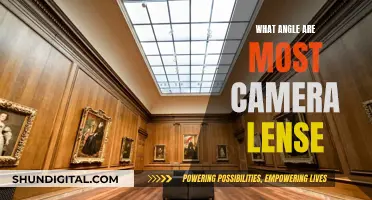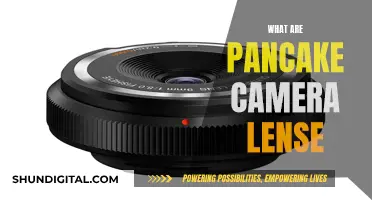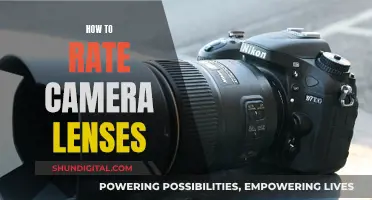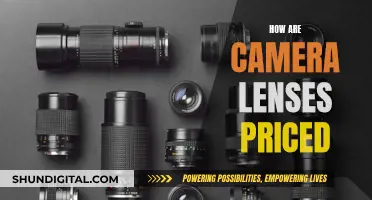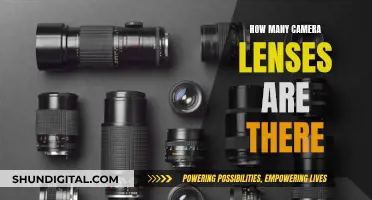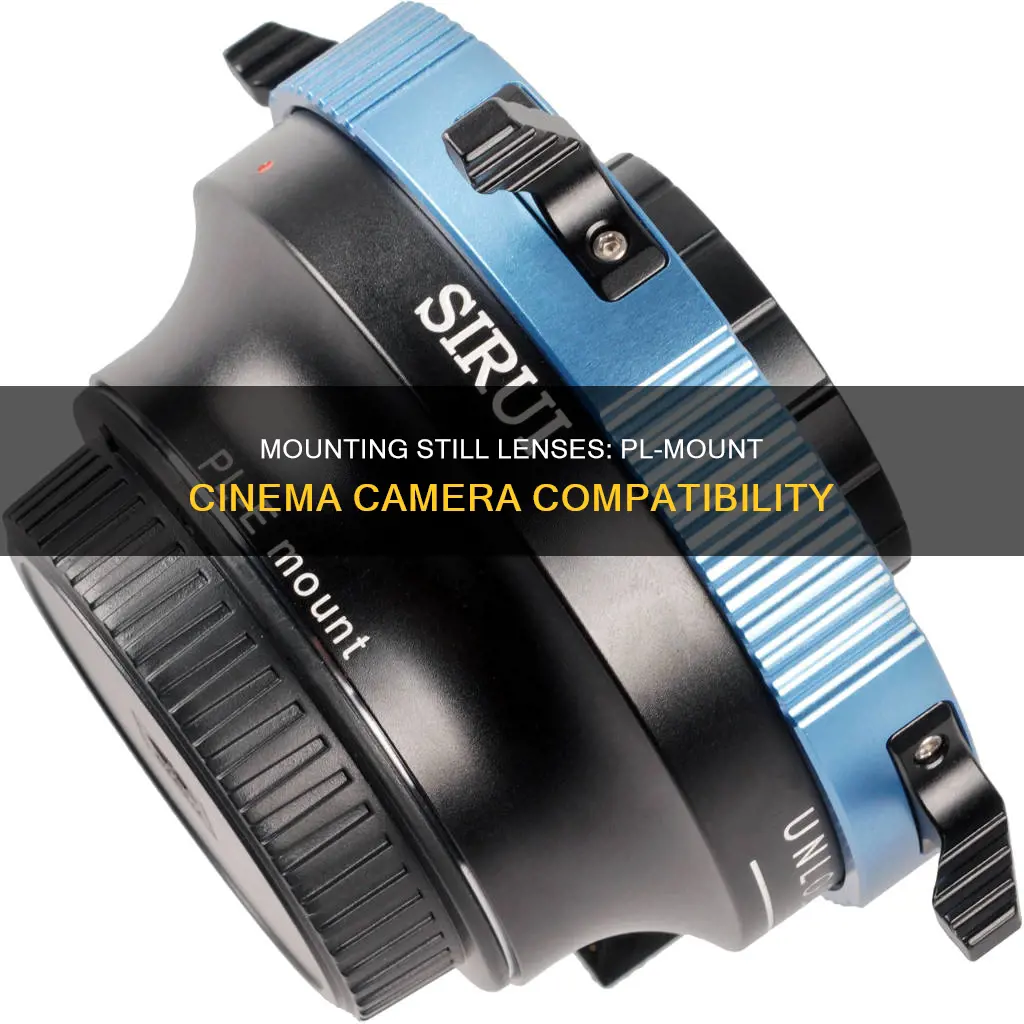
Cinematographers and filmmakers often use still lenses on cinema cameras to achieve a specific look or feel for their projects. This process involves adapting the lens mount of the camera to fit the still lens. In this case, we will discuss how to mount still lenses on a PL mount cinema camera. PL mount, introduced by ARRI in 1982, is a standard mount for cinema cameras and lenses, offering a sturdy and precise option for filmmakers. While there are various lens mount types, such as screw-threaded and bayonet-type, the PL mount is specifically designed for cinema lenses and provides a secure and stable option.
What You'll Learn

Understand the differences between lens mounts
Understanding the differences between lens mounts is essential for filmmakers and photographers who want to use different lenses on their cameras. The lens mount is the interface that connects a camera body and a lens, allowing for interchangeable lenses. While there are various types of lens mounts, modern still camera lens mounts typically use a bayonet-type mechanism due to its precision and ease of attaching and detaching lenses. Here are the key aspects to understand when comparing different lens mounts:
Mount Type:
The most common types are screw-threaded, bayonet, and breech-lock (friction lock). Bayonet mounts are prevalent in modern still cameras as they ensure precise mechanical and electrical connections between the lens and the camera body. They use tabs and recesses to align and lock the lens in place.
Compatibility:
Lens mounts from competing manufacturers (e.g., Sony, Nikon, Canon) are often incompatible with each other. This is a significant consideration when investing in lenses, as it may "lock" you into a specific brand's ecosystem.
Flange Focal Distance:
Also known as "flange-back distance" or "register," this is the distance from the lens mount to the film or sensor. This distance varies among camera systems and is crucial when adapting lenses from one mount to another.
Mount Size:
The mount size, including the throat size and inner and outer diameters, determines the potential of the mount. A larger mount size allows for larger lenses and more light to reach the sensor, enabling faster lenses. However, larger mounts also result in larger and heavier lenses.
Electronic Contacts:
The number and placement of electronic contacts differ among lens mounts. These contacts enable communication between the lens and the camera, facilitating features like autofocus and data transfer.
Direction of Mounting:
Some brands, like Nikon, use a counter-clockwise direction for mounting lenses, which can be confusing for users accustomed to other brands.
Price and Availability:
Lens mounts and compatible lenses vary significantly in price and availability. Certain mounts and lenses may be more accessible or affordable than others, influencing your choice.
When choosing a lens mount, consider factors such as the camera system you're using, the lenses you want to adapt, and your budget. Additionally, seek out reputable sources and reviews to ensure accurate information about the specific mounts and adapters you're interested in.
Old Lenses, New Cameras: Is There Compatibility?
You may want to see also

Learn about the Arri PL-mount
The Arri PL-mount is one of the two most popular mounts used in professional digital cinematography cameras, the other being the Panavision PV-mount. The PL-mount is used on Arri and RED digital cinematography cameras, which are the most used cameras for films shot in digital. The mount is held in place with locating pins and friction locking rings.
The PL-mount is the most common mount used for lenses in the world of cinematography. It solidly locks the lens in place with a threaded flange, unlike the spring-loaded bayonet mounts. The greater mount diameter allows for lenses with larger rear optical elements, enabling modern, high-speed lens designs.
The PL-mount was introduced in the early 1980s and was designed for 16mm and 35mm lenses. The mount has a 54mm diameter and a 52mm flange focal distance. The LPL mount, introduced in 2018, is a newer version of the PL-mount designed for large format or "full frame" camera systems. It has a wider diameter of 62mm and a shorter flange focal distance of 44mm.
How Camera Lenses Use Refraction to Capture Images
You may want to see also

Learn about the Panavision PV-mount
The PV-mount is a lens mount developed by Panavision for use with both 16 mm and 35 mm film and digital movie cameras of various sensor sizes. It is one of the mounts offered with Panavision cameras and Panavision-designed lenses. The PV-mount is held in place with locating pins and friction locking rings, creating a very strong lens seating. This has become crucial in recent years as bigger lenses with longer focal lengths and zoom capabilities have increased the requirements for mount stability.
The mount itself contains four-pronged flanges, one of which contains a locating pin in the centre. This pin is usually seated at the bottom of the camera lens mount, where a complementary hole exists. The mount is locked into place using a friction locking ring, which, in conjunction with the four prongs of the flange, ensures a secure connection.
Panavision also offers modifications, or "Panavisions", to third-party camera and lens equipment, allowing clients to retain their personal equipment preferences. As they are the only company that can offer this service, customers wanting to use Panavision lenses on non-Panavision cameras, or vice versa, must rent this equipment directly through Panavision.
Welding and Cameras: Can Welding Damage Camera Lenses?
You may want to see also

Explore lens mount adapters
Lens mount adapters are a great way to utilise old lenses with your new camera, or to match a different brand of lens to your camera. They can also help your existing collection of lenses go further with any new cameras you collect.
Adapters can be screw-threaded, bayonet-type, or breech-lock (friction lock). Modern still camera lens mounts tend to be bayonet-type, as this variety precisely aligns mechanical and electrical features between the lens and body. Screw-threaded mounts, on the other hand, are fragile and do not align the lens in a reliable rotational position.
When choosing a lens mount adapter, it is important to identify both your lens mount and your camera mount. The easiest way to do this is to search for the lens's original camera model and the camera model you are using now, followed by "lens mount". For example, if you have an old Nikon lens that was used on a Nikon FM2, you can search for the Nikon FM2 lens mount to confirm that the lens has an F-mount.
Once you have identified the mounts you need to connect, you can select an appropriate adapter. When attaching your lens and adapter to your camera, be sure to put all settings on your lens and camera into manual mode and select "shoot without lens" in your camera settings. Attach the lens to the female end of your lens adapter, then insert the male end of the adapter into the camera body.
It is important to note that lens mount adapters do not enable electronic communication between the lens and the camera. Therefore, you will need to manually set your exposure and focus while using an adapter. If your lens does not have a manual aperture control ring, it will stop down to its smallest f-stop by default.
There are many lens mount adapter options available on the market, including those made by Urth, Lensbaby, and various brands on Amazon. When choosing an adapter, be sure to select one that is compatible with your specific lens and camera models.
In addition to third-party adapters, some camera manufacturers also offer lens mount conversion services. For example, Hot Rod Cameras offers a PL mount modification for the Canon 7D camera, allowing you to use cinema lenses with this DSLR camera. This modification costs $3,250 for the modification service alone, or $4,800 for a new 7D camera with the PL mount pre-installed.
Clean Your Phone Camera Lens Scratch-Free
You may want to see also

Compare EF vs PL lenses
When it comes to lens mounts, there are several options to choose from, each with its own advantages and disadvantages. Two of the most popular options are the Canon EF-Mount and the ARRI PL-Mount. Here's a detailed comparison between the two:
Canon EF-Mount:
The Canon EF-Mount is the most versatile mount on the market and is used by more filmmakers and video producers than any other mount. Canon introduced the EF-Mount in 1987, and it has since become a standard, especially in the DSLR market for both photographers and indie filmmakers. One of its main features is Electro-Focus (EF), which allows small motors in the lens to enable auto-focus. The EF-Mount also has a long list of third-party manufacturers, including renowned brands such as Zeiss, Schneider, Tamron, Sigma, Tokina, and Rokinon. EF lenses are also more plentiful and affordable, with options available for every budget. Additionally, many lenses can be adapted to EF, providing access to a wide range of lens options.
ARRI PL-Mount:
The PL-Mount, introduced by ARRI in 1982, is the definitive lens mount option for Hollywood films, both big and small. It has become the de facto standard for cinema cameras and lenses, with almost universal buy-in from lens manufacturers. The PL-Mount uses a durable flanged mounting system, making it extremely robust and capable of securely locking in place and holding heavier lenses without issue. This mount is built to withstand the rigours of filmmaking, where lenses tend to be bigger and heavier compared to photo lenses. However, PL lenses are built specifically for cinema and are typically more expensive. They do not have autofocus capabilities and require manual focus. PL-Mount lenses are also sturdy and precise, with a four-point friction lock that ensures the lens is firmly gripped and secured in place.
In summary, the choice between EF and PL lenses depends on specific needs and budgets. EF lenses offer a wider range of options, autofocus capabilities, and are more affordable. On the other hand, PL lenses are the industry standard for cinema, offering sturdy and precise mounts but at a higher cost.
AppleCare: Camera Lens Coverage Explained
You may want to see also
Frequently asked questions
A lens mount is the interface between a camera body and a lens. It is mechanical and often electrical. Modern still camera lens mounts are of the bayonet type, which precisely aligns the mechanical and electrical features between the lens and body.
ARRI introduced the PL mount in 1982, and it has become a standard for cinema cameras and lenses. The mount is held in place with locating pins and friction locking rings.
The Zeiss Distagon 25mm/T1.3 S16 PL Mount Lens (Super Speed) is an example of a lens that uses a PL mount.
The RED Weapon is an example of a cinema camera that uses a PL mount.
You can use a lens adapter to attach a lens to a camera body with non-matching mounts. You can find lens adapters on websites like B&H.


